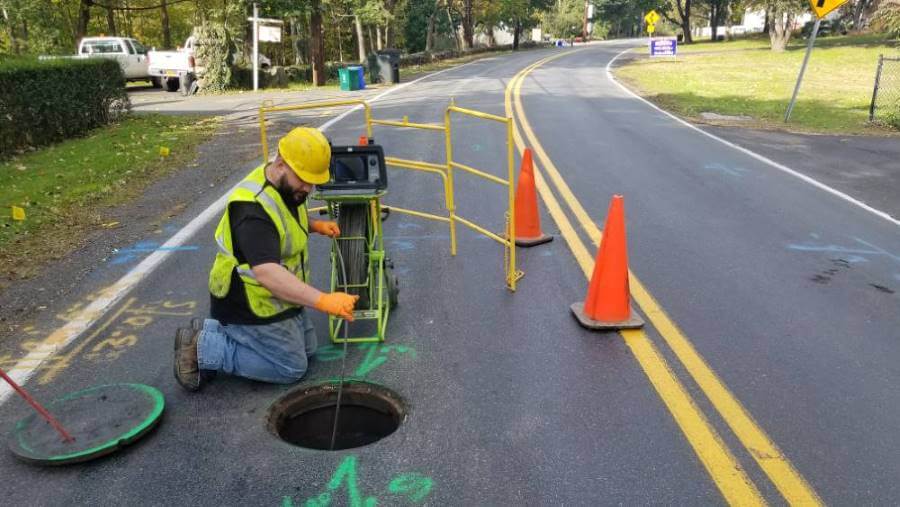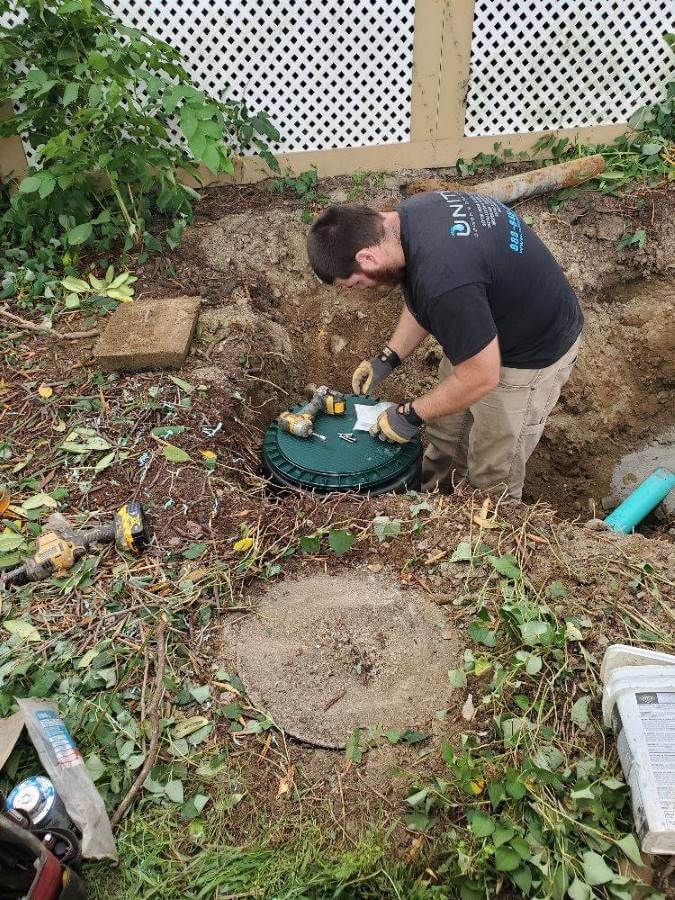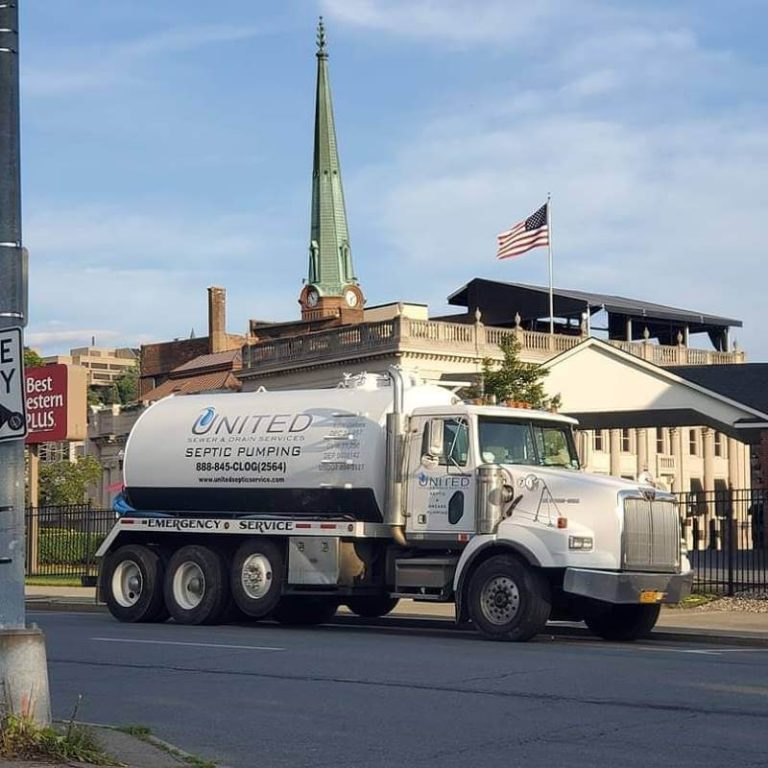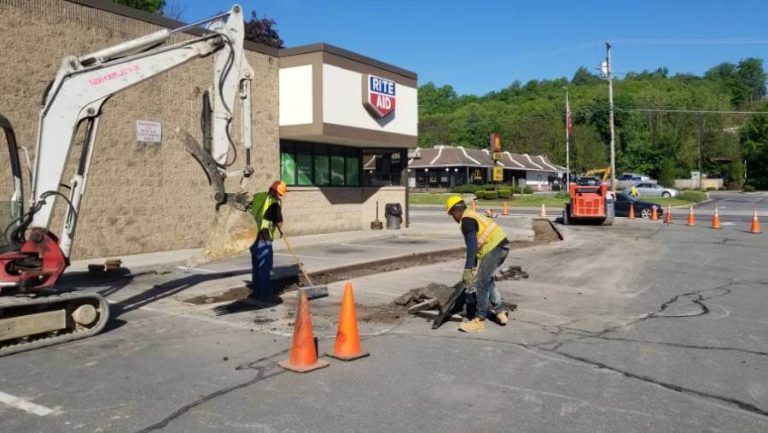Essential Maintenance Requirements for Lift Stations
Lift stations are critical components of Maintenance Requirements for Lift Stations, requiring regular maintenance to function properly. These stations pump sewage from lower to higher elevations, allowing it to flow by gravity to treatment facilities. In Middletown, New York, proper lift station upkeep is crucial for preventing backups and protecting public health.
Table of Contents
Key takeaways
- Regular inspections are vital for identifying potential issues early
- Pump maintenance is the cornerstone of lift station upkeep
- Electrical system checks ensure reliable operation
- Cleaning and debris removal prevent clogs and equipment damage
- Safety protocols must be followed during all maintenance activities
- Professional servicing is recommended for complex repairs and upgrades
Understanding Maintenance Requirements for Lift Stations Basics
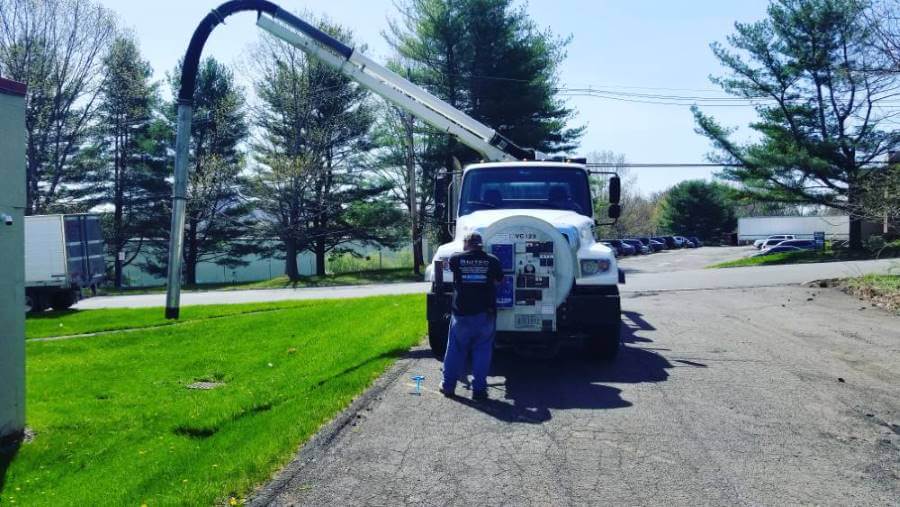
Lift stations are essential in areas where the terrain doesn’t allow for gravity-fed sewer systems. In Middletown, these stations help move wastewater across the hilly landscape. A typical lift station consists of a wet well, pumps, valves, and a control system. The wet well collects incoming sewage, and when it reaches a certain level, the pumps activate to move the wastewater to the next point in the system.
Components of Maintenance Requirements for Lift Stations
The main parts of a lift station include:
- Wet well: A basin that collects wastewater
- Pumps: Typically submersible or dry-pit pumps that move the sewage
- Valves: Control the flow of wastewater
- Control panel: Houses the electrical components and monitoring systems
- Backup power supply: Often a generator to keep the station running during power outages
Understanding these components is crucial for effective maintenance. Each part plays a specific role in the system’s operation and requires different care.
Regular inspection schedule
A consistent inspection routine is the foundation of Maintenance Requirements for Lift Stations. In Middletown, we recommend weekly visual checks and more thorough monthly inspections. During these checks, operators should look for signs of wear, unusual noises, or odd smells that might indicate problems.
Weekly checks
Weekly inspections should include:
- Visual examination of the wet well for debris or unusual levels
- A quick check of pump operation
- Verification that alarms and controls are functioning
- Brief listen for any unusual noises from pumps or motors
These quick checks can catch developing issues before they become major problems. They’re like giving your car a once-over before a long trip – it’s a simple step that can save a lot of trouble down the road.
Maintenance Requirements for Lift Stations: Monthly Inspections
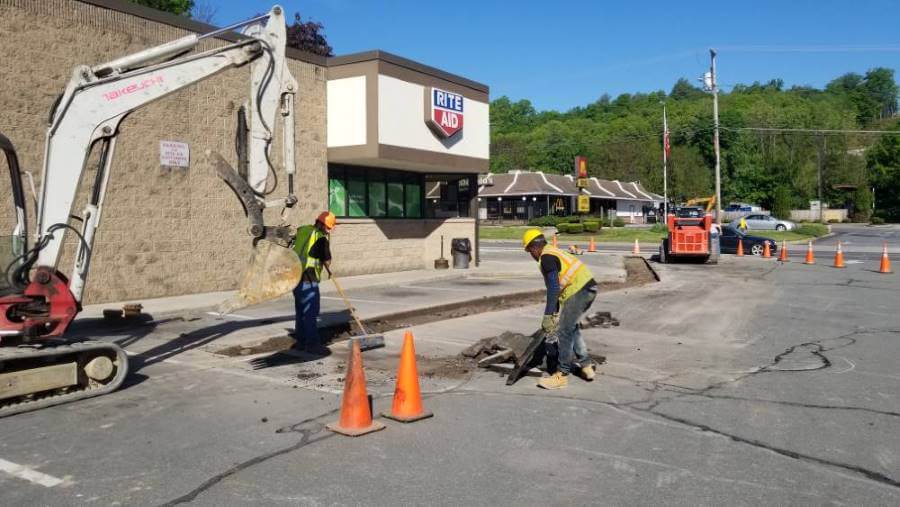
Monthly inspections of Maintenance Requirements for Lift Stations. should be more detailed:
- Thorough cleaning of the wet well
- Detailed examination of pump impellers and seals
- Testing of all valves and check valves
- Inspection of electrical connections and controls
- Verification of proper float switch operation
These more in-depth checks help ensure all components are working as they should. It’s like taking your car in for regular service – it keeps everything running smoothly and can prevent breakdowns.
Pump Maintenance Essentials
Pumps are the heart of any Maintenance Requirements for Lift Stations is critical. In Middletown’s climate, where we see everything from hot summers to freezing winters, pumps need special attention.
Lubrication and bearings
Proper lubrication is key to pump longevity. Bearings should be greased according to manufacturer specifications, typically every 3-6 months. Overgrazing can be as harmful as undergreasing, so it’s important to follow guidelines closely.
Impeller inspection
The impeller is what moves the wastewater through the pump. It should be checked for wear, damage, or clogs at least quarterly. In Middletown, where we sometimes see debris from storm runoff, impellers may need more frequent checks during rainy seasons.
Seal replacement
Seals prevent water from entering the motor and causing damage. They should be inspected regularly and replaced at the first sign of wear or leakage. Depending on usage, seals might need replacement every 1-3 years.
Electrical System Maintenance Requirements for Lift Stations
The electrical components of a lift station are its brain and nervous system. They need regular attention to ensure reliable operation Maintenance Requirements for Lift Stations.
Control panel checks
The control panel should be inspected monthly for signs of corrosion, loose connections, or wear. In Middletown’s varying weather, moisture can be a particular concern, so seals and gaskets need close attention.
Float switch testing
Float switches control when pumps turn on and off based on water levels. They should be tested monthly to ensure they’re activating at the right levels. A malfunctioning float switch can lead to pump damage or sewage backups.
Backup power testing
Backup generators should be tested monthly under load to ensure they’ll work when needed. In Middletown, where winter storms can cause power outages, a reliable backup power system is crucial.
Cleaning and debris removal
Regular cleaning is essential for preventing clogs and equipment damage. In Middletown, where we see everything from leaves to road salt depending on the season, debris can accumulate quickly.
Wet well cleaning
The wet well should be cleaned thoroughly at least quarterly, with more frequent cleanings if there’s a lot of grit or debris. This involves pumping out the well, removing solid waste, and cleaning the walls and floor.
Screen and Basket Maintenance Requirements for Lift Stations
Many lift stations have screens or baskets to catch larger debris before it enters the pumps. These should be cleaned weekly, or more often if there’s a heavy debris load.
Grease management
Grease buildup can cause major problems in lift stations. In areas with many restaurants, like parts of Middletown, grease traps should be inspected and cleaned regularly to prevent issues downstream.
Valve maintenance and testing
Valves are critical for controlling flow and allowing for pump maintenance. They need regular attention to ensure they’re working properly.
Check valve inspection
Check valves to prevent backflow and protect pumps. They should be inspected quarterly for proper operation and signs of wear.
Gate valve exercise
Gate valves that aren’t used regularly can seize up. They should be exercised (opened and closed) at least quarterly to ensure they’ll work when needed.
Valve lubrication
Valves with external moving parts may need lubrication. This should be done according to manufacturer recommendations, typically every 6-12 months.
Odor control measures
Lift stations can be a source of unpleasant odors if not properly maintained. In residential areas of Middletown, odor control is particularly important for maintaining good community relations.
Carbon filter maintenance
If the station uses carbon filters for odor control, these need to be checked monthly and replaced as needed, typically every 6-12 months.
Chemical treatment systems
Some stations use chemical treatments to control odors. These systems need regular checks to ensure proper chemical levels and functioning dosing equipment.
Ventilation system upkeep
Proper ventilation helps control odors and provides a safe working environment. Fans and vents should be checked monthly for proper operation and cleaned as needed.
Safety protocols and equipment
Safety should always be the top priority when maintaining lift stations. The confined spaces and potential for hazardous gases make this work dangerous if proper precautions aren’t taken.
Personal protective equipment
Workers should always use appropriate PPE, including:
- Hard hats
- Safety glasses
- Gloves
- Steel-toed boots
- Gas detectors
Confined space entry procedures
Entering a lift station requires following strict confined space entry procedures. This includes:
- Atmospheric testing before entry
- Use of a tripod and harness for retrieval
- Continuous air monitoring
- A standby person outside the space
Emergency response planning
Every lift station should have an emergency response plan. This should include procedures for power outages, equipment failures, and spills. The plan should be reviewed and updated annually.
Record Keeping and Documentation: Maintenance Requirements for Lift Stations
Good record-keeping is essential for tracking maintenance needs and identifying trends. In Middletown, where we have to report to state environmental agencies, thorough documentation is particularly important.
Maintenance logs
Every maintenance activity should be logged, including:
- Date and time of service
- Work performed
- Parts replaced
- Any unusual observations
Equipment Inventory
Maintain an up-to-date inventory of all equipment, including:
- Make and model numbers
- Serial numbers
- Installation dates
- Warranty information
Performance tracking
Track key performance indicators like:
- Pump run times
- Energy usage
- Number of alarms
- Overflow incidents
This data can help identify issues before they become major problems and guide decisions about upgrades or replacements.
Professional servicing and upgrades
While routine maintenance can be handled by trained staff, some tasks require professional expertise. In Middletown, where we have to meet strict environmental regulations, it’s smart to call trusted septic and drain specialists in Middletown who understand local systems and can make sure everything runs safely and stays compliant.
When to call in the pros
Consider professional servicing for:
- Major pump repairs or replacements
- Electrical system upgrades
- SCADA system installation or updates
- Wet well rehabilitation
Upgrade considerations
As Middletown grows and changes, lift stations may need upgrades. Consider professional assessment for:
- Increased capacity needs
- Energy efficiency improvements
- Advanced monitoring systems
- Odor control upgrades
Seasonal maintenance considerations
Middletown’s changing seasons bring different maintenance challenges for lift stations.
Winter preparations
Before winter, focus on:
- Checking heat trace systems on exposed pipes
- Ensuring proper insulation
- Testing backup power systems
- Stocking up on de-icing materials
Spring maintenance
As winter thaws, pay attention to:
- Checking for frost damage to concrete and structures
- Cleaning out debris that may have accumulated over winter
- Inspecting for groundwater infiltration as snow melts
Summer upkeep
During hot months, be mindful of:
- Increased odor potential due to higher temperatures
- Possible increased flow from summer events or tourism
- Higher energy usage for cooling electrical components
Fall readiness
As leaves fall and temperatures drop, focus on:
- Clearing leaves and debris from station surroundings
- Preparing for potential increased flow from fall rains
- Final checks on heating systems before winter
Training and staff development
Well-trained staff are crucial for effective lift station maintenance. In Middletown, where we have a mix of older and newer stations, staff need a broad knowledge base.
Ongoing education
Provide regular training on:
- New equipment and technologies
- Safety procedures and updates
- Environmental regulations and compliance
Cross-training
Ensure multiple staff members can perform key maintenance tasks. This provides backup in case of absences and helps staff understand the whole system better.
Certification programs
Encourage staff to pursue relevant certifications, such as those offered by the New York Water Environment Association. These programs can enhance skills and provide valuable networking opportunities.
Troubleshooting common issues
Even with good Maintenance Requirements for Lift Stations, problems can arise. Quick identification and resolution of issues is key to preventing major failures.
Pump failures
Common pump issues include:
- Clogging from debris
- Seal failures
- Bearing wear
- Electrical problems
When troubleshooting pumps, start with the basics: check power supply, look for clogs, and listen for unusual noises.
Control system malfunctions
Control system problems might include:
- False alarms
- Failure to start pumps
- Incorrect level readings
Often, these issues are related to float switch problems or electrical connections. Regular testing can catch many of these issues early.
Overflow incidents
If an overflow occurs:
- Respond immediately to stop the overflow
- Report the incident as required by regulations
- Clean up thoroughly and disinfect affected areas
- Investigate the cause and take corrective action
Long-term planning and budgeting
Effective lift station maintenance requires long-term planning. In Middletown, where we’re balancing growth with aging infrastructure, this is particularly important.
Asset management
Develop a comprehensive asset management plan that includes:
- Inventory of all lift station components
- Expected lifespan of each component
- Replacement cost estimates
- Priority ranking for replacements and upgrades
Budget forecasting
Use historical data and future projections to create a multi-year budget for:
- Routine maintenance costs
- Major repairs and replacements
- Upgrades and improvements
Technology integration
Consider how new technologies could improve efficiency and reduce costs:
- Remote monitoring systems
- Energy-efficient pumps
- Advanced control systems
| Maintenance Task | Frequency | Estimated Cost |
|---|---|---|
| Routine inspection | Weekly | $100-$200 |
| Wet well cleaning | Quarterly | $500-$1000 |
| Pump maintenance | Annually | $1000-$2000 per pump |
| Electrical system check | Monthly | $200-$400 |
| Major overhaul | Every 5-10 years | $10,000-$50,000+ |
| Component | Expected Lifespan | Replacement Cost |
|---|---|---|
| Submersible pump | 10-15 years | $5,000-$15,000 |
| Control panel | 15-20 years | $10,000-$30,000 |
| Wet well structure | 30-50 years | $50,000-$100,000+ |
| Check valves | 10-15 years | $1,000-$3,000 each |
| Float switches | 5-7 years | $200-$500 each |
By following these Maintenance Requirements for Lift Stations for the future, Middletown can ensure its lift stations continue to operate efficiently and reliably for years to come. Regular upkeep not only prevents costly failures but also protects public health and the environment. Remember, in the world of lift stations, an ounce of prevention is worth a pound of cure. Feel free to visit our website or contact us for assistance.

